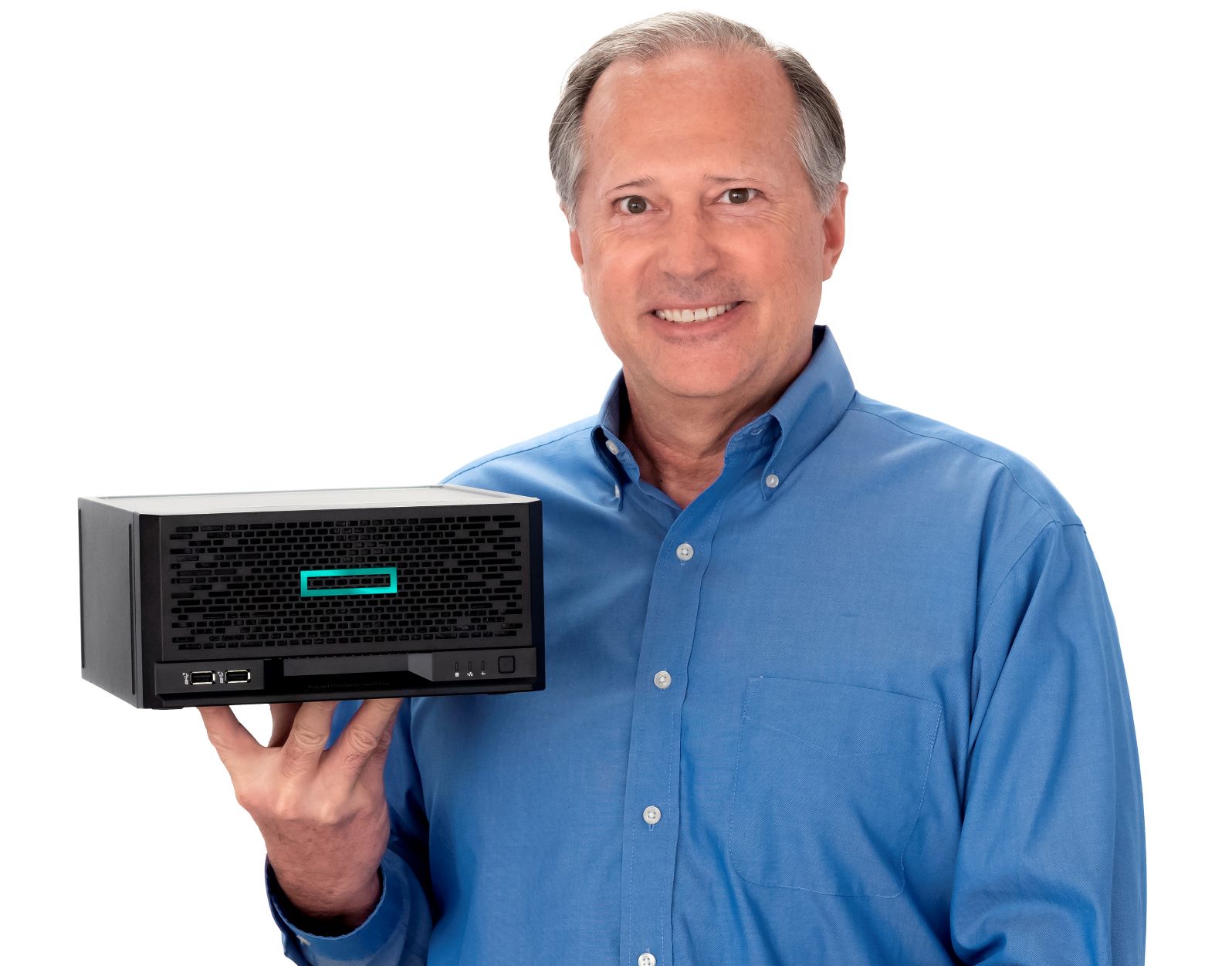
HPE has launched a new, pocket-sized server coming in at sub-shoe box size and weighing just 4.5 kilograms, as the company joins rivals in pushing an increasingly wide range of servers designed for smaller businesses/edge computing configurations.
Customers can rent the ProLiant MicroServer Gen10 Plus over a 36-month term, with “subscription” starting at $20 a month (roughly £15.50) but depending broadly on individual configurations. (We know it, you know it: always read the small print).
This particular launch is aimed squarely at the small business sector, with the box designed to securely handle fairly modest on-site applications like local file storage, backups, Active Directory, and network gateway — it is also light and small enough to site in most locations and runs at just 36 decibels, HPE boasted.
“As a Presales Consultant, I see this server in a small office deployment with less than 50 employees running file & print, email, active directory, and collaborative applications. There are changes like iLO 5 remote management for virtual KVM, inventory and alerts (which are so important for businesses who look to technology consultants to manage their environment), and Smart Array 100i that can provide RAID 5 out of the box”, said Juan Antonio Ibañez Andres, of Spanish consultancy Pleiades Tecnología S.L.
Baby Server: What are the Specs?
Xeon E-2224 is good for customers who have more reliance on compute and virtualisations, an HPE spokesman told Computer Business Review.
“It can support memory speed up to 2666 MT/s and VMware OS.
“The Pentium G5420 is good for budget-concerned customers also: that processor generates 54W which is 17W lower than the Xeon E-2224. However it only supports memory speed up to 2400 MT/s and doesn’t support VMware OS.
He added: On graphics, Gen10 Plus doesn’t support embedded graphics like Gen10. HPE is working to qualify a PCIe graphic card to support associated workloads.”
Root of Trust
As a first in the company’s ProLiant MicroServer range the box also features HPE’s exclusive silicon root of trust technology, which is recognized by insurers in the Marsh Cyber Catalyst program for its ability to reduce risk.
HPE said: “It is the industry’s only server family that extends security protection at the silicon-level. It protects data, detects issues and rapidly recovers from malicious firmware attacks that could lead to major downtown.”
What Do I Do With It After 36 Months?
At the termination of the subscription agreement, the technology is returned to one of HPE’s global Technology Renewal Centers in Andover, MA, or Erskine, Scotland, HPE explained to Computer Business Review.
“HPE also has a network of local or regional certified partners where technology can also be returned. During the renewal process, the tech goes through an extensive audit, which includes data cleansing, authentication, and chain of custody tracking. We embody a ‘reuse before recycle’ philosophy, with nearly 90 percent of technology given a second life, contributing to a more circular economy.”
“Digital transformation is becoming a key part of IT strategy for small to mid-sized businesses (SMBs) and we expect two-thirds of SMBs to embrace it by 2023,” said Shari Lava, research director, Small Medium Business (SMB) Research Program, IDC.
“SMBs are looking for easy-to-manage solutions that can scale as needed. Solutions, such as this one from HPE, addresses this demand with small businesses by delivering enterprise-grade technologies, which combine servers, software, networking and cloud capabilities that are easier for small business to adopt and manage regardless of their in-house IT capabilities.”
Header image shows Tim Peters, the VP & GM of Global SMB & Mid-Market, HPE






